 SELECTED
ISSUE
SELECTED
ISSUE
|
|
Leisure Management - ITC Hotel Group

Top Team

|
|
| ITC Hotel Group
|

India’s greenest luxury hotel chain launched its first spa 10 years ago and now has 40 hotels in the pipeline. Neena Dhillon meets the people behind the burgeoning hospitality group to talk wellness, expansion and sustainability
|

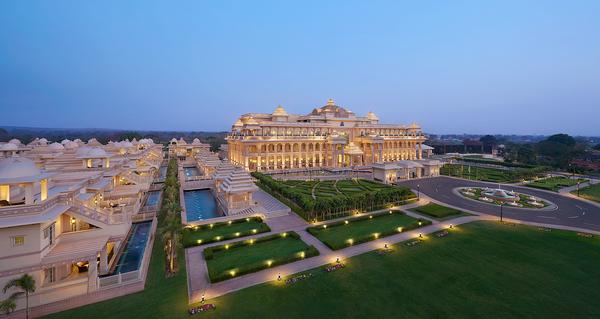
ITC’s Grand Bharat houses the brand’s flagship spa

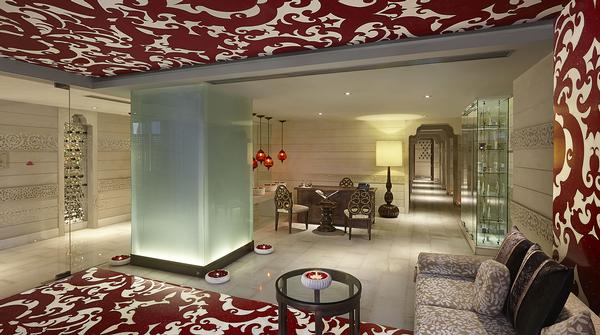
Signature colours of the spa are white and red, but each location is different
|
|
|
Encompassing more than 100 properties in 70-plus destinations, ITC Hotels is one of the fastest-growing Indian hospitality chains. Backed by the might of a multi-dimensional corporation, it forms one of 13 businesses comprising ITC Limited, an enterprise rated among the top three private-sector contributors to the national exchequer, with a turnover exceeding US$8bn. Feeding into a company-wide ethos of ‘Putting India First’, the hotels division has 40 properties in the pipeline across four brands. All but one will open in India. ITC Hotels entered the business in 1975 through a partnership with Sheraton in Chennai, and has since evolved into a chain with a strategic emphasis on promoting India’s rich cultural heritage. Its long-term approach involves building assets in multiple destinations in order to generate demand – eschewing a supply focus – thereby attracting visitors to different parts of the country. Acquisitions and management partnerships are also options as the group grows and creates value for tomorrow’s India. In addition to constructing hotels that have won architectural accolades, ITC’s brands include culinary concepts based on the varied gastronomy of India. Each of these dining experiences is aligned to ITC Hotels in relevant regions. Fuelled by a desire to introduce an indigenous spa brand that would leverage Indian wellness philosophies and compete at an international level, the chain launched Kaya Kalp in 2008. The first spa, at ITC Mughal in Agra, made a splash as the biggest Indian facility at the time, measuring 9,200 sq m (92,000sq ft). Today, each of the 11 luxury ITC Hotels has a Kaya Kalp, with the 12th to be unveiled this year. A scaled-down version – K by Kaya Kalp – can be found in eight WelcomHotels, including the new Coimbatore property. We talk to the people behind the hotel chain and spa brand to find out more.
|
|

|
Dipak Haksar, Chief executive, ITC Hotels & WelcomHotels
What’s the ethos of ITC Hotels and how does the business differentiate itself?
We are a brand with an Indian soul. In a country as diverse as ours, there’s no single destination that defines our culture, so we endeavour to showcase each region through indigenous architecture, interiors, art and cuisine, as well as wellness experiences and service designed to convey local traditions. This is what we mean by ‘Hotels that Define the Destination.’ Having said that, all our hotel operations are underscored by a ‘Responsible Luxury’ ethos, which favours ecologically sensitive products, services and suppliers.
Can you demonstrate some of those green credentials?
All hotels in our luxury collection are certified as LEED Platinum, and the US Green Building Council presented us with a 2017 Greenbuild Leadership Award. ITC Limited has been carbon-positive, water-positive and solid-waste-recycling-positive for over a decade. Moreover, we work beyond typical green boundaries to establish deep connections to local communities, whether by forging relationships with farmers, promoting sustainable agricultural practices, bringing education to rural women or developing conservation programmes.
How do you select locations for expansion?
Investment in the flagship luxury hotel portfolio is driven by the objective of enhancing India’s tourism landscape. Debuting next in Hyderabad’s HITEC city, a sprawling technology hub, ITC Kohenur brings our luxury collection to 12, with a design inspired by the 13th-century Kohinoor diamond, thought to have been found in a local mine. We are already mid-construction with WelcomHotels in Guntur and Bhubaneswar. Having a four-tier brand architecture helps us to penetrate different regions. While we believe in organic growth in India, we are making our first overseas foray with a development in Colombo because there is strong tourist inflow to India from Sri Lanka and vice versa.
Can you tell us about the evolution of the Kaya Kalp brand?
Its inception came about because we wanted to champion the wellness and healing knowledge that has long existed in our culture.
Since we launched the brand, our spas have become known for an array of holistic therapies, quality environments and highly qualified professionals.
We have a hands-on approach, favouring natural treatments, organic products and touch therapy. We recognise the shift from pampering towards preventative and curative measures and we work to identify therapies – from stress relievers to muscle rejuvenators, chakra balancing to detoxification – suited to the wellbeing of the individual.
"We wanted to champion the wellness and healing knowledge that has long existed in our boundaries"
| |
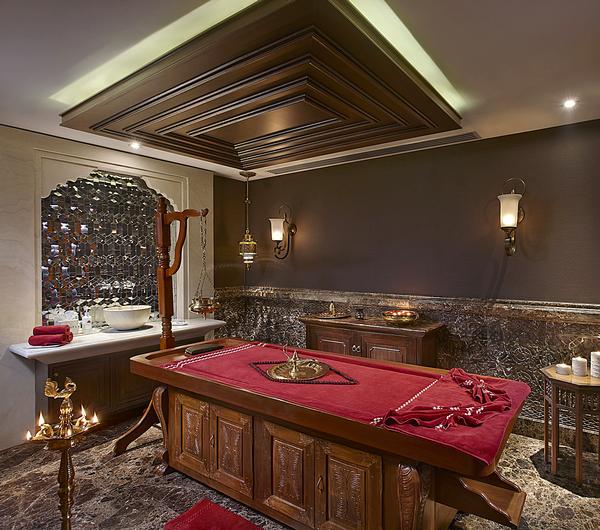

|

Spas have a hands-on approach, favouring natural treatments, including ayurveda |
|
|

|
ITC Hotels: a snapshot

Today: 9,000 rooms across 4 brands
In the pipeline: 5,000 additional rooms slated by 2021
• ITC Hotels: 11-strong luxury collection entirely owned and operated by the chain; all are additionally part of Marriott International’s The Luxury Collection under a partnership agreement.
• WelcomHotels: 14 five-star properties, either owned or managed.
• Fortune: 40-plus upscale to mid-market hotels, mostly managed.
• WelcomHeritage: 40+ leisure properties, including small palaces, havelis and forts. Independent ownership, five-star services provided on a consultancy basis.
|

|
Andrew Saldanha, Divisional wellbeing manager, ITC Hotels
Every ITC Hotel has a Kaya Kalp – The Spa, but how do you determine its size and design?
We have an internal committee that specifies salient features of architecture, service infrastructure and the scale of facilities required whenever a new hotel is built.
International design firms are then selected; for instance, Malaysia’s DesignWilkes is involved in Hyderabad, while Denver’s Archiventure Group PC oversaw ITC Grand Bharat.
Space is earmarked in keeping with the expected demand, so our resort properties have more elaborate spas than hotels in business hubs. For example, Kaya Kalp – The Royal Spa, which opened at our first all-suite retreat, ITC Grand Bharat, takes up an entire floor of the hotel at 3,251 sq m (34,993sq ft).
We generally have the hotel architect design the spa to ensure consistency of language across the property. Designers are familiarised with the theme and look of existing spas so that key design elements are harmonious across the brand.
What’s the theme?
Each spa is themed around the pomegranate, considered a symbolic fruit of life and abundance and introduced to India by the Mughals.
This is not to say our spas are cookie cutter; signature colours of red and white as well as opulent tranquil spaces are common to interiors, but in each location the theme is interpreted differently.
How does the concept appeal to today’s spa-goers?
Ayurveda was a part of everyone’s life in India at one time, but modern lifestyles have eroded these traditions.
This knowledge has largely been forgotten, even among Indians to some extent, but we’ve been seeing renewed, meaningful and sometimes spiritual interest in it.
We integrate ayurvedic rituals and philosophies into our menu, as well as exotic body treatments, such as the pomegranate scrub, or herbal pouches which are made by therapists with local ingredients.
Guided yoga and meditation are also available, while each location has unique therapies amalgamating wisdom that once would have been common to the region.
There are international treatments too from Ila and Comfort Zone, which arouse the curiosity of Indian guests.
While there are individual hotels with an ayurvedic focus, we are distinct as a five-star chain in offering a cohesive approach to Indian wellbeing, combined with consistency of standards and protocols.
Demand from Indian residents has seen us trialling spa membership at ITC Hotels in Mumbai and Kolkata.
How else does ITC Hotels promote wellbeing?
Nearly a decade ago, we initiated research into how we could enhance sleep for guests, particularly those travelling from different time zones.
Our Sleep menu shares pointers on meditations that can aid sleep; pillow mists and stress reliever sprays are offered in-room; 20-minute therapies including acupressure can be booked before bedtime; and herbal beverages are available through in-room dining. We find that consuming the right nutrients and balancing all five senses can have a deep impact on quality of sleep.
"Each spa is themed around the pomegranate, considered a symbolic fruit of life and abundance and
introduced to India by the Mughals"
| |
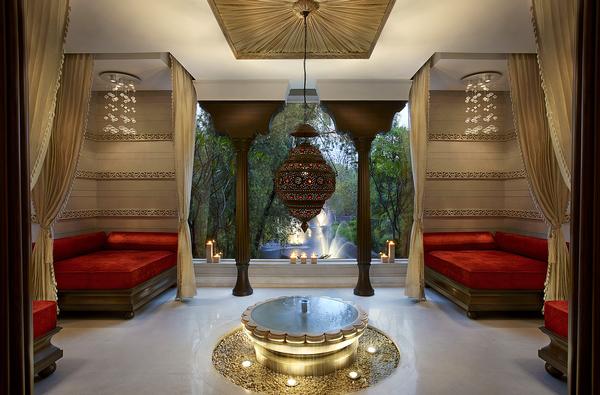

|

The relaxation room at the ITC Mughal includes rich, opulent decor, creating a tranquil space |
|
|

|
On the march: 15 ITC Hotels by 2020

• ITC Kohenur, Hyderabad:
272 rooms + Kaya Kalp – The Spa. Debuts in second quarter 2018
• ITC Royal Bengal, Kolkata:
456 rooms + Kaya Kalp
• ITC Narmada, Ahmedabad:
294 rooms + Kaya Kalp. Projected 2019 opening
• ITC One, Colombo:
300 rooms + Kaya Kalp. Projected 2020 opening, international debut
| |
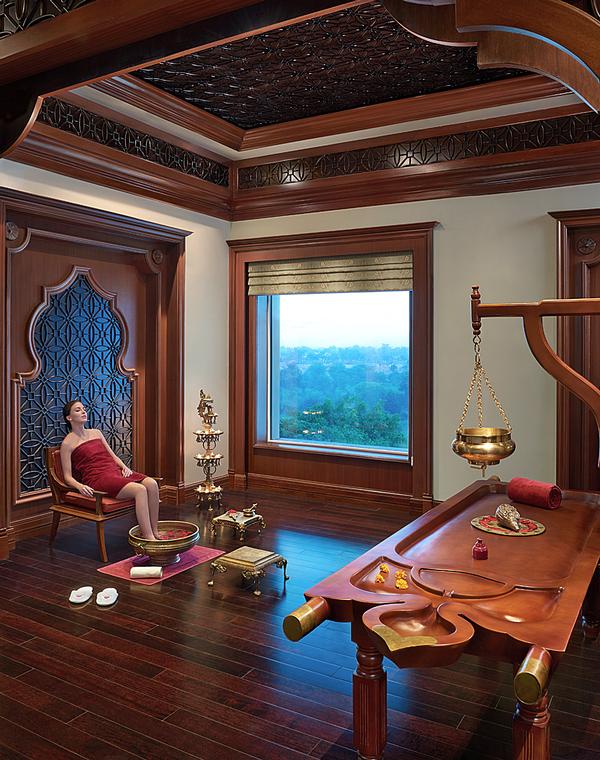

|

Ayurvedic rituals are a speciality at Kaya Kalp |
|

|
Ritu Srivastava, Spa manager, ITC Grand Bharat
Your spa is a flagship within the chain. How many visitors to ITC Grand Bharat take a treatment?
On average, 40 per cent. For travellers who have been touring the Golden Triangle, there is typically little respite from activity, so we offer an opportunity to add a sojourn to this itinerary on our verdant 1.2 sq km estate in Gurgaon.
Other guests select our retreat especially for the wellness packages, such as the seven-night Vedic Weight Management or Ayurvedic Detox, popular among overseas visitors, or the three-night stress management package, favoured by domestic guests.
The modern idea of wellness is relatively new to Indians, who are starting to learn to invest in themselves. But more people are understanding the importance of holistic wellbeing in countering today’s pace of life.
Can spas really give people an insight into the system of ayurveda?
Of course, if you are only here for two nights, we can only provide a window into traditions such as ayurveda or yoga.
A treatment like Shirodhara gives you an experience, but for its full preventative or curative benefits, you need more than one session.
At our retreat hotels, we have resident ayurvedic doctors who undertake consultations with guests to recommend therapies based on their body types (doshas).
What other wellness trends are you responding to?
Personalised nutrition is a growing trend. Here we provide Swasthya cuisine, integrated into our wellness packages and prepared by our chefs following a consultation with the ayurvedic doctor and based on his recommended list of foods.
Again, the aim is to balance the doshas of the individual by combining specific ingredients to satiate, restore and energise the body and create balance.
We’ve also introduced a Visiting Masters Series, where renowned holistic healers reside here for a couple of weeks, and offer personalised sessions as part of packages.
What are the major challenges facing spa managers in India?
We train therapists in both ayurvedic and international treatments, although you do need specialists for therapies such as Abhyanga massage.
Retaining highly qualified staff can be challenging because there’s so much demand for them in the five-star sector.
Academies teach the basics, but we have our own three-month programme that therapists complete on-site, followed by ongoing training.
In our growing industry, these therapists are of high value.
"More people are starting to understand the importance of holistic wellbeing"
| |
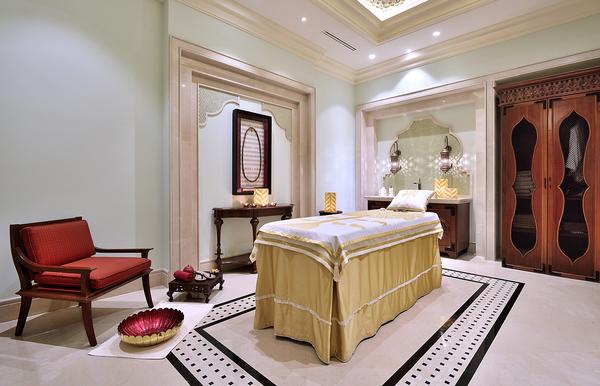

|

The Kaya Kalp spa at the ITC Grand Bharat takes up an entire floor at 3,251sq m |
|
|
Neena Dhillon writes about spas, hotels and travel trends around the world, and is a regular contributor to Spa Business.
email: ndhillon@spabusiness.com
|
|
 |
| Originally published in Spa Business 2018 issue 1
|
|
 |
|
|
|
|